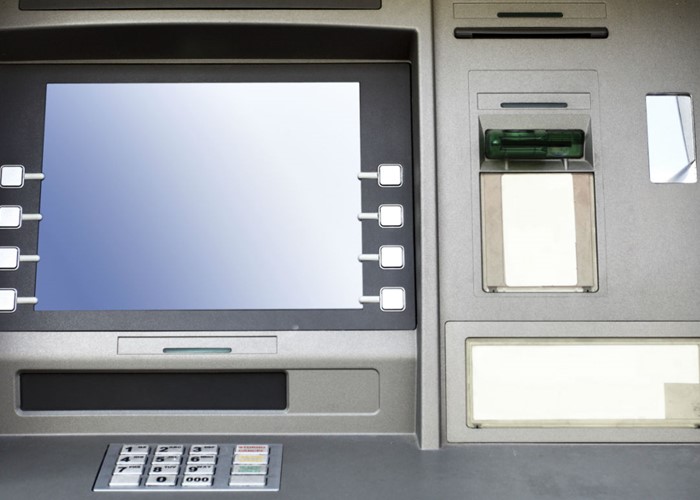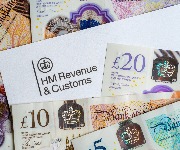5 tips to protect yourself from ATM fraud

Card skimming scammers managed to steal £80 million in the past year. Here's how to protect yourself from ATM fraud.
Ever heard of skimming? If you think it involves removing the floaty bits from a hot chocolate, think again. Skimming is a form of ATM fraud and last year the method was so successful fraudsters managed to steal £80 million from us. And in some parts of the country, the scam is more prevalent than others – according to card protection firm CPP, a staggering 37% of people in Cardiff have fallen victim to card crime in the past year.
Of course it's not just Cardiff - London is almost as bad, with 35% of people having been defrauded, followed by Norwich (30%), Southampton (28%) and Leeds (27%).
Here's the top ten cities where card fraud is at its worst:
Worst 10 UK cities for card fraud
|
|
City |
Percentage defrauded |
|
1 |
Cardiff |
37% |
|
2 |
London |
35% |
|
3 |
Norwich |
30% |
|
4 |
Southampton |
28% |
|
5 |
Leeds |
27% |
|
6 |
Newcastle |
25% |
|
7 |
Plymouth |
24% |
|
8 |
Glasgow |
24% |
|
9 |
Edinburgh |
24% |
|
10 |
Nottingham |
23% |
So what is skimming and how does it work? And most importantly, how can you protect yourself?
How card skimming works
The most common form of skimming occurs when you go to use an ATM (automatic teller machine) and don't realise that a false front has been attached to the card reader - where you insert your card. This then captures your card number and transmits it wirelessly to someone waiting nearby.
A hidden camera will also be attached to the machine - perhaps in a leaflet holder, a loose wire or a loose fitting - and this will capture your PIN as you enter it.
Alternatively, criminals will use a keypad overlay that matches up with the buttons of the legitimate keypad below it, recording what is pressed and transmitting it to the fraudsters via a wireless device.
Criminals will then be able to make a copy of your card and use it, along with the PIN, to withdraw funds and buy goods. So the next time you check your bank account, it's likely to be empty.
Another technique used is where your card gets stuck in the machine and a kind passer-by offers to try your PIN for you. When this doesn’t work, the same passer-by then offers to stand guard while you report the problem to the bank. The fraudster than takes the card and uses the PIN you gave him or her to withdraw your cash.
Here are five ways to protect yourself from ATM fraud:
1) Protect your PIN
It goes without saying that you should never carry your PIN on you, in case you get mugged. That includes putting your PIN in your mobile phone as a contact under the name of your bank or an obvious entry like ‘Pin’.
Similarly, protect your pin while you’re at the ATM. Cover it with your hand when you enter it, and don’t ever give it to anyone, especially if there’s a problem with the machine. Some fraudsters have been known to dress in bank uniforms and hang out by the machine, so even official-seeming offers to help should be rejected.
2) Pick your ATMs carefully
Try to only use ATMs inside a bank or those you are familiar with, as you are more likely to spot whether there’s something different about the keypad or the card insert device.
If you must use an ATM at night, avoid dimly-lit areas and opt for ATMs protected by CCTV.
3) Get cashback from shops instead
Each visit to an ATM involves potential risk – so try to make as few trips as you can.
Instead, try to get cashback from a reputable retailer when you make a purchase. Most supermarkets offer cashback and you don’t need to make a large purchase to get your cash.
Remember to protect your pin from prying eyes again, and don’t let the card out of your sight or even your hands, if possible.
4) Keep track of your accounts
Under the UK’s Banking Code, banks are obliged to compensate you if you are a victim of card fraud.
Related blog post
- Tony Levene writes:
How I was targeted by a property scammer
Tony Levene explains how the scam widely known as 'land banking' actually works in practice.
Read this post
However, if a large amount of time goes by before you notice it, the bank could argue you did not take reasonable care and potentially legitimately refuse to compensate you on that basis.
In other words, the sooner you notice and report a fraud, the more likely it is that your bank will deal with your claim for compensation quickly and fairly.
So it’s wise to regularly check all your bank accounts to ensure everything is correct. Earlier this year, lovemoney.com launched a free online banking service that allows you to check all your bank accounts and credit cards with a single log-in. So whenever you visit lovemoney.com to read an article, it’s easy to pop over to online banking and quickly check everything is as it should be. You can even set yourself a budget and categorise your transactions if you want to.
Always open your bank and credit card statements promptly as well to ensure nothing is amiss.
5) Be suspicious
Always check the ATM to see whether anything looks suspicious - if anything has been added or changed, either go to a different ATM or, if you're outside a bank, go inside to ask about the changes.
Check the card reader before inserting your card. If you feel a small prong, then it’s a false front – don’t use it. Tell the bank.
Some modern ATMs run a picture of what the slot and keypad are supposed to look like, so keep an eye out for these and check whether anything looks different from the picture displayed.
What to do if you’re a victim
1) Report the fraud - and any theft –-to your bank immediately.
2) Report the fraud to the police.
3) Check your credit report to ensure the fraudsters haven’t also stolen your identity. Consider buying protective registration from CIFAS. It only costs £14.10 and will force anyone applying for credit in your name to undergo extra identity checks.
Compare credit cards at lovemoney.com
More: How I was targeted by a property scammer | Why you should use online banking
Most Recent
Comments
-
All very good advice.... But this does not cover the faulty ATM. In my case I am now past the second anniversary for the financial ombudsman to make a decision. Banks benefiting from the LINK system should take responsibility for mechanical faults on the ATMs instead of passing the buck (risk) back to the other bank and then the customer. Also always wait at the machine until the 'Welcome' sign comes up again on the screen before leaving.
REPORT This comment has been reported. -
I'm shocked to hear this scenario [b][url=/profile/MK22.aspx]MK22[/url][/b] and although it's now too late to take matters further, your son or yourself, should have raised a formal complaint to that Bank and requested a full 'Inspection' of that branch's hierarchy. It's a disgrace to our already tarnished industry.
REPORT This comment has been reported. -
@Donna, sorry, I can't remember even if he did actually tell me the name of the bank at the time!
REPORT This comment has been reported.
Do you want to comment on this article? You need to be signed in for this feature









22 December 2010